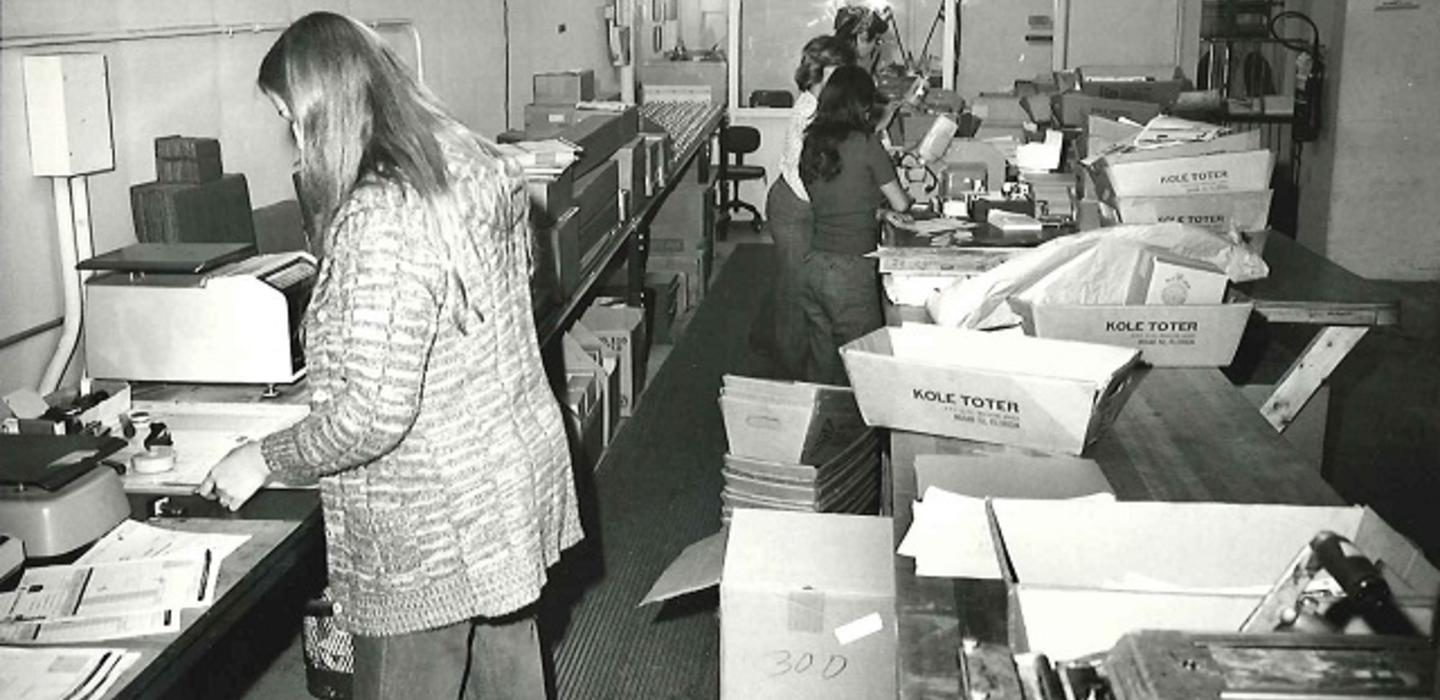Compiling and accessing vital statistics about Lions wasn’t always as easy as a click of a few buttons. Paper documents by the millions—letters, telegrams, cablegrams, new member applications, officer election results, club supply orders and countless other forms—were the dominant medium for exchanging information for most of Lions’ history.
In the 1920s, reports from clubs circulated among the departments at Lions headquarters in Chicago before being filed away, but that was when clubs numbered in the hundreds. By 1967, there were more than 20,000 clubs spread across the globe. In a special 50th anniversary edition, the LION Magazine reported that incoming mail to International Headquarters in Chicago totaled more than 3.5 million pieces annually, including 240,000 club attendance and activities reports.
The anniversary issue also featured photographs of a recently installed Honeywell mainframe computer whirring away in an air-conditioned room at headquarters. The cabinet-size machine was a big step forward, of course. But it did not stem the avalanche of paper. Dozens of data entry clerks were required to transfer information from club and district reports on paper to punched cards and paper tape. The incoming reports, and copies of any relevant outgoing correspondence, were then filed away in separate folders for each club and district.
As more clubs were founded, more folders were opened. And each folder would gradually swell to capacity. When a club purchased a Lions road sign, for example, three new documents went into the club file: the order form, the shipping record and a copy of the invoice.
The whole system survived into the early 1980s. And somehow it worked. Members got the LION Magazine every month without fail, or perhaps only a month or two later when they moved to a new address. District and club officers received timely bulletins and announcements. International Headquarters produced reliable statistics.
Why go to all that trouble? The numbers demonstrated the scope and impact of Lions’ service mission around the world. They provided vital demographic information for planning Lions’ future, and the records allowed Lions to share the what, who, when, how and why of any service project with other clubs considering similar activities.
As technology improved, Lions around the world and the supporting staff at headquarters would soon get a much needed break from the burdens of paperwork and more time to do what they do best: Serve others.
Explore the exciting history of Lions Clubs International with our exclusive Touchstone Stories series. Don’t forget to share these stories with new members so they gain an understanding of Lions history!

